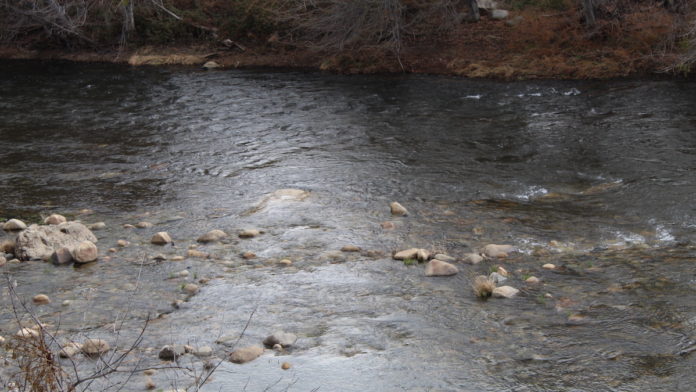Here you can see how the water flows around the bigger rocks | Jeffrey Walters
Most of us have been out fishing someplace but not getting a single bite all day long. Then someone shows up about 50 feet from you and starts catching fish. How in the heck is this person doing that? We have been there all day, same style of fishing, same area, same everything and nothing! The answer can be pure luck or that person just happened to be able to “read the water” and knew where the fish would be holed up.
We have all looked at a place either on the river or lake and we just know a fish would be there, or do we simply guess? Learning how to see what the water is telling you makes all the difference between being a lucky angler and a real good angler. You can read the tell-tale signs of how the water flows, where it swirls, what those swirls mean and so much more. But how do we get this information, where can we find it and who can teach us? Well, it’s time to get ready to learn some tricks.
The shallow and somewhat fast-moving water found on the Upper Kern River provides many different feeding troughs, hiding spots and ambush points for fish to be hiding in. Water flows in the path of least resistance, flowing around and over obstacles such as boulders, rocks and gravel bars. The water will flow around a big rock forming two different sections of water, one in front and one behind the rock. The section in front “breaks” the water flow, forcing it around the rock and making the current slower and wider. This happens about 5 feet behind the rock, and that is where a lot of the food gets dropped by the current and the fish are simply waiting for a meal to float by.
The deeper the water, the better the odds are that fish will be hiding behind it. But how do you get your bait there for the fish to see it? You can cast across the stream and bring your bait or lure to the area. You can also cast upstream and let the current move the bait to the fish since this is the most natural way. Or you can cast right to that spot and bump them on their little noses, which sometimes works. If you’re bait fishing, you really want to let the current do the work. Lure, jig or fly fishing is different because you are making something look alive to attract the attention of the fish.
The best way to achieve results is to look at what the water is doing: The flow, the speed, the depth. Then figure out what tactic you may want to try, and please do try them all for a better success rate. Study the water flow, see how it moves around the bigger rocks and over the gravel bars. This is where the natural bait gets swept up by the current and flows downstream to where the fish are waiting.
Credit: Source link































